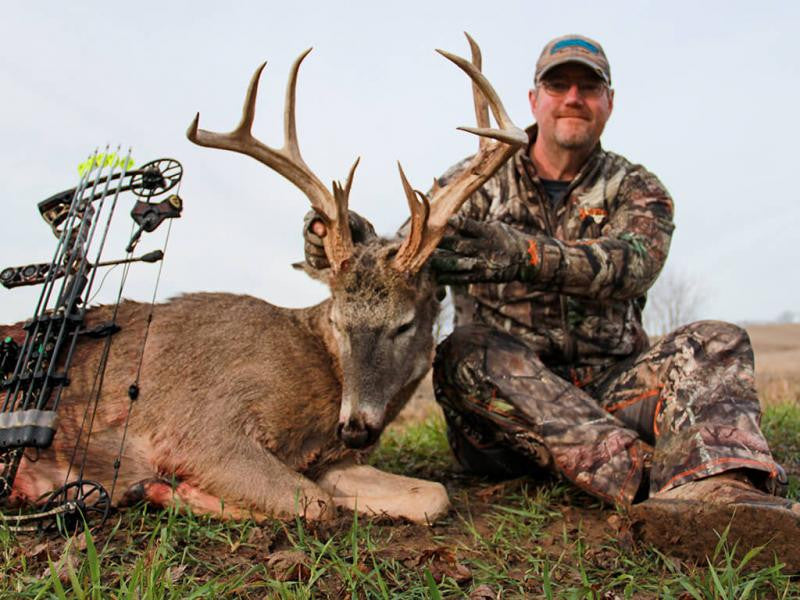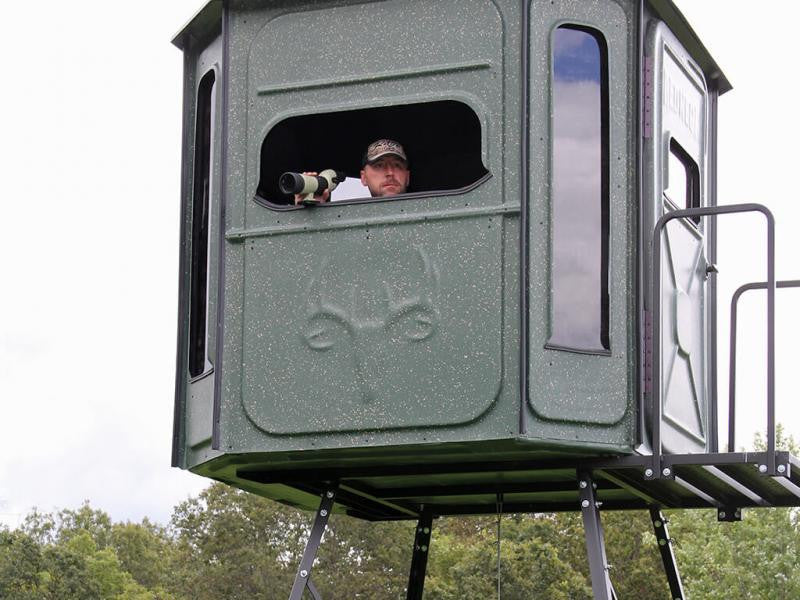
Rethinking How to Create a Kill Plot
5 min read
I was beyond frustrated with myself. I’d just invested a full week’s worth of effort into clearing an in-woods kill plot with a chainsaw and gallons of sweat. I’d raked the debris, top seeded the ground and the plants were already emerging. Now, having packed the stand in with me, I walked in circles, staring at trees, fruitlessly trying to will one of them to work.
This is a problem far too many have. We all realize that having low impact stands to hunt is a key to success and keeping a property fresh. Still, far too often it’s an afterthought to our efforts to improve a property’s hunting quality.
Frankly, we reverse the steps for plot creation. The end result is often disappointment and almost never produces the best results. Here’s how to change that.
Rethinking the Kill Plot Process
The first step in creating the best possible kill plots is to throw out how most of us think about the process. Typically, the first step is determining what areas would be easiest for establishing the plot. That makes some sense, in that few realize how comparatively cheaply one can rent a dozer or how much they can get done in one day.
To this day, I’ve never paid more than $100 an hour for a dozer and operator, and I can always get it for less than $70 an hour, if I’m willing to do the operating. For less than the cost of a new bow, one can almost always get at least three new kill plots cleared, as well as a few small water holes and improved access, and that’s being conservative for most properties.
For about the price of a new bow, one can get a dozer to transform the hunting on a property for a lifetime of enjoyment.
For those that can’t justify the dozer charge or simply want to do it themselves, a chainsaw can be a thing of beauty. Somehow, we’ve been trained to believe that food plot quality must rival cash cropping. It doesn’t. Most weeds are cheap deer food and seeding around stumps is far from the end of the world. In fact, if the trees are cut at around chest level, those stumps help offer a smidgen of deer cover, as well as serving as posts to hang lick branches from. So long as we have some candy crops growing, that’s good enough for the deer.

Leaving stumps in the kill plot not only helps deer feel safer in the kill plot from the cover they provide, but also allows us to hang licking branches that help transform our kill plots into social hubs.
Next, we must consider entrance, exit and stand placement. There’s a tremendous advantage to being able to slip in and out, as well as hunt undetected. Unfortunately, high odds stands very rarely naturally offer low impact.
Before ever considering putting in a new food plot, extremely important questions must be answered. Some as basic as where the deer will be during travels to and from, as well as while on the stand. One obviously needs to go unseen or heard while doing those things. What many fail to consider is that they also should do their darnedest not to get winded during those three phases of the hunt. One just can’t do that if they don’t know where the deer will be during those times.
One must also factor in how this new plot will impact deer activity. Since we’re talking kill plots here, a very effective strategy is placing the kill plot around 50 yards off the main food source, located on one of their existing lines of movement between bedding and that food source. That right there is going to help a lot, as the deer will likely be staging in the kill plot, moving on to the primary food source in the evening or bedding in the morning. By the deer not camping out on the kill plot, one can often wait for the deer to leave before climbing out of stand.
However, one must also be able to get to and from the location, without being seen, heard or winded. That makes low impact access and departure routes important. One also must have a wind the plot can be hunted from safely.
There’s only one way I’m aware of to consistently pull all of this off. That’s to determine safe access, departure and stand placement, before one ever begins clearing or breaking dirt. After learning how the deer use your ground and anticipating how the change will impact deer movements, the next step is figuring out how to hunt is safely. Simply put, if one can’t access, depart and hunt the stand without getting busted, the area isn’t right for a kill plot. Keep looking until one is found or, worse case, select the least potentially damaging sites that still will provide a high odds kill plot.

An important factor in killing ancient bucks like this in kill plots is for them to never sense danger on the plot. Determining access, departure and safe stand locations before trees are cleaned or the ground is broken is the key to pulling that off.
With that done, build the kill plot around the stand location, not the more common reverse of that. When clearing the plot, one can use the removed trees and brush to create blockades. Use that to your advantage by blocking the areas you don’t want deer to enter or exit, while leaving ample, easy to travel areas where it is both safe and within shooting distance of the stands.
The Redneck Advantage
This is where Rednecks offer a huge advantage. Unlike various tree stands, Rednecks can be placed darn near anywhere, in that they don’t require a suitable stand tree. Certainly, they are benefitted from being able to blend the blind into cover, but even that isn’t a must have. In just the past season, we’ve taken both a 5.5 and a 6.5 year old buck, as well as my daughter’s first doe out of Redneck hunting blinds that are sitting in wide open fields.
To pull this off, two things must be done. They can only be hunted on safe winds and the deer can’t see the hunter entering or existing the Redneck. So long as the hunters are careful and don’t give deer reasons to associate danger with the blind, a Redneck can be effectively placed in the open.

Not only do Rednecks hunting blinds eliminate the need for an acceptable tree being where we need it, their complete enclosure allows us to safely hunt them in a much wider area, while also helping to contain scent.
One still needs to determine where the hunting blind will be set before clearing or ground breaking begins. However, Redneck users have far more flexibility in the precise placement of the blind than tree stands offer. As an added bonus, keeping the backside windows closed further reduces the odds of a rogue wind swirl educating deer.
Conclusion
To truly get the best hunting opportunities a property has to give, the trick is not allowing the deer to know we’re hunting them on that ground. When we successfully pull that off, our hunting grounds have the strong tendency to keep getting better and better with each passing day of season, as the neighboring hunting pressure pushes deer to what they see as their sanctuary on our grounds.
One can still hunt a property hard, while realizing that advantage. To do so, simply use your habitat improvements to create high odds, low impact stand sites. Determine how to get to and from, as well as hunt a location safely and you’ve got the game licked. Luckily, Rednecks make that even easier for us.
1 Response
Leave a comment
Comments will be approved before showing up.


Brian Sheppard
December 14, 2017
I always find the information that you share is GREAT. Sometimes just that reminder Big or small is always GREAT to have.
Thanks again